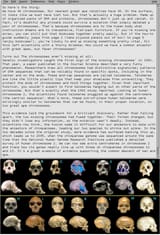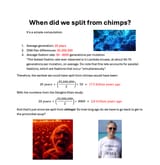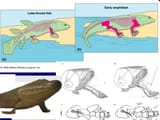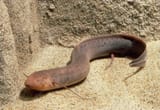>>17828199This isn't correct. Now that the human genome has been directly sequenced we have completely disproven what was already a grasping cope that "oh man our chromosome numbers are actually different...well...there must have been a fusion somewhere!".
You can see the claimed site of the fusion by clicking here: http://genome.ucsc.edu/cgi-bin/hgTracks?position=chr2:114360507-114360538&db=hg19&ss=../trash/hgSs/hgSs_genome_4ac5_cc50.pslx+../trash/hgSs/hgSs_genome_4ac5_cc50.fa&hgsid=312102787. The second and third A’s are where the fusion site supposedly is.
Now, telomeres are the sequence CCCTAA (and its compliment, TTAGGG) repeated thousands of times. So to the right of the fusion site, we should see CCCTAA repeated over and over again. To the left, we should see TTAGGG repeated in the same way.
But we don’t. If you keep scrolling to the right, within 500 bases CCCTAA is never repeated more than twice in a row. And if you search within 64,000 bases (which is way longer than a telomere), its only there 136 times at all. Plus, unlike telomeres, the two sequences are jumbled together. You’ve got about 20 TTAGGG’s to the right of the fusion site, and about 20 CCTAAA’s to the left of it. So we don’t see anything at all like a telomere there.
Our mutation rate is not nearly enough to even come close to accounting for these changes if we descend from an apelike ancestor at the time evolution claims. So it is genetically impossible.
There’s also another problem: there’s no extra centromere in Chromosome 2. If two chromosomes fused, you’d have an extra centromere as well as a telomere. But there’s nothing resembling an additional centromere in the chromosome. You image says there is but that is completely false. Look at the paper at https://pmc.ncbi.nlm.nih.gov/articles/PMC5722054/, it's written to attempt to account for ways the second centromere could have been excised. It isn't there.











